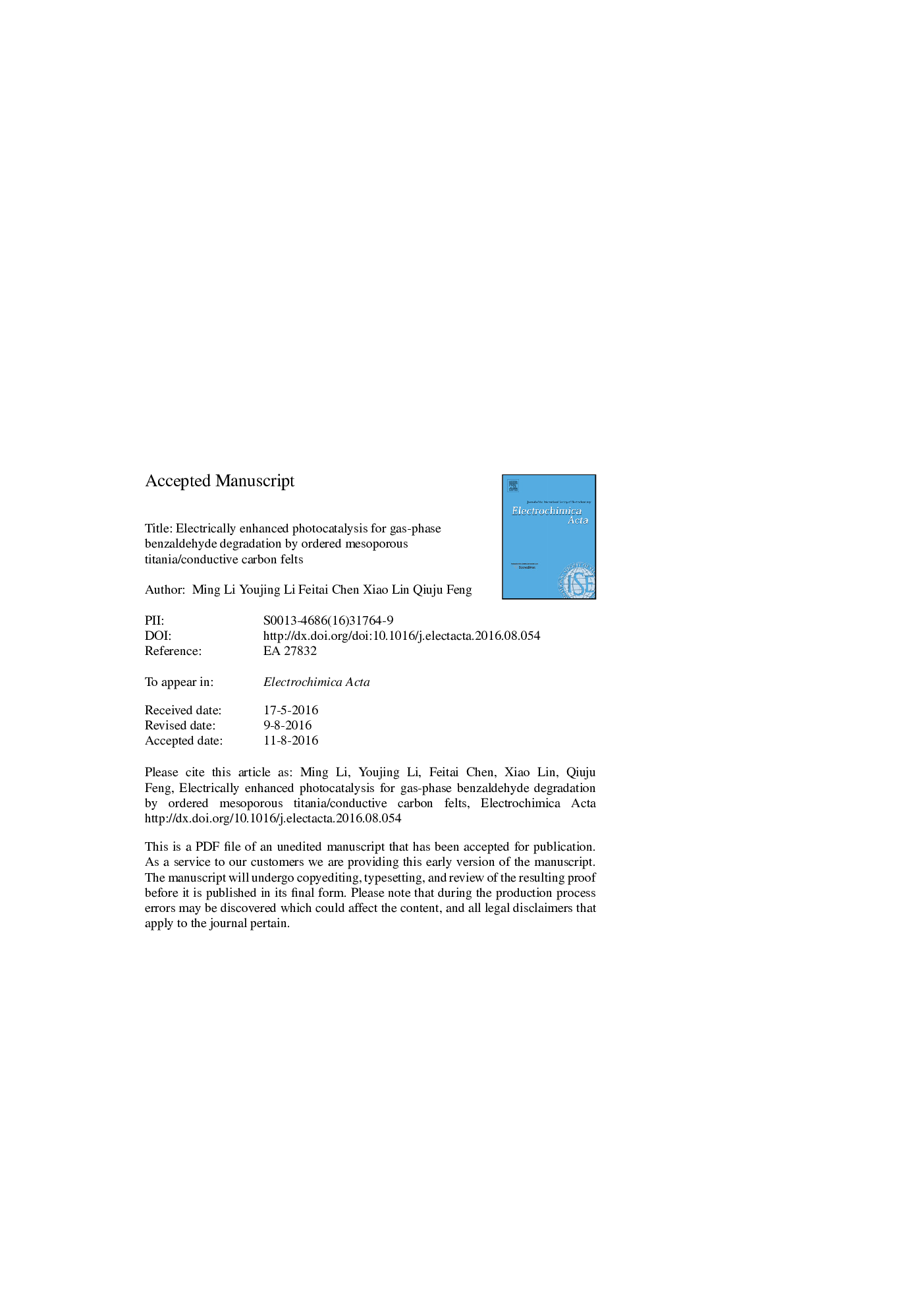| Article ID | Journal | Published Year | Pages | File Type |
|---|---|---|---|---|
| 4767806 | Electrochimica Acta | 2016 | 35 Pages |
Abstract
An ordered mesoporous titania/conductive carbon felt (OMT/CCF) composite electrode has been assembled by a liquid-crystal-template method with the assistance of ultrasonic deposition for the first time. This OMT/CCF electrode was then used for the electrically enhanced photocatalytic (EEP) degradation of gas-phase benzaldehyde (GPB). Analytical characterization of the obtained OMT/CCF showed that it had an ordered mesostructure with small crystallite size and high surface area. It exhibited the highest gas-phase EEP activity for GPB degradation, exceeding those of nanoparticle titania/CCF (NPT/CCF), OMT/indium-tin oxide (OMT/ITO), and P-25/ITO by factors of 2.1, 2.4, and 2.8, respectively. Furthermore, the OMT/CCF exhibited highly stable gas-phase EEP degradation efficiency over many cycles. The mechanism underpinning the significantly enhanced gas-phase EEP efficiency has been analyzed. A kinetic model has been established using response surface methodology to describe the relationship between the rate constant and the affecting parameters. Optimized parameters were found to be a light intensity of 72Â mWÂ cmâ2 with a bias voltage of 40Â V. On the basis of the identified intermediates of GPB in the EEP degradation process, a degradation mechanism is proposed.
Related Topics
Physical Sciences and Engineering
Chemical Engineering
Chemical Engineering (General)
Authors
Ming Li, Youjing Li, Feitai Chen, Xiao Lin, Qiuju Feng,
